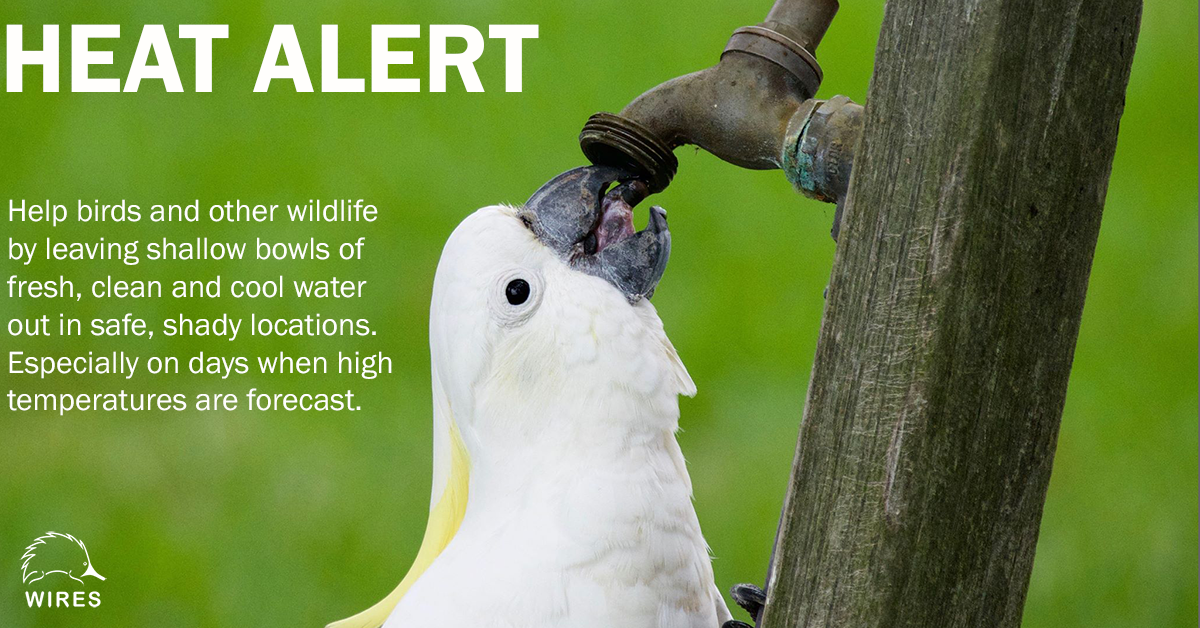Heatwaves
When we experience extremely high temperatures for several days, it may be the weather that our wildlife is not used to. This means they may not be able to cope with the conditions. As a result, animals may be seen suffering dehydration and exhaustion.
Identifying a heat-stressed animal
- Birds may pant by opening their beaks, holding their wings out and away from their body.
- Heat stressed animals may appear confused and lethargic.
- Flying-foxes, possums, gliders, koalas may come to the ground or low to the ground during daylight hours.
- Kangaroos and wallabies may be lying down and not move away quickly if startled. They may also be seen salivating.
- Reptiles may seek refuge from the heat in cool, dark places to cool down.
- Severely impacted animals may suffer convulsions or lose consciousness.
- Some animals may also suffer burns on their paws from hot roofs and road surfaces.
How you can help
If you find an animal (not a flying-fox, a bat, a macropod, wombat or reptile) that is showing signs of heat stress but is conscious and appears otherwise uninjured, please read the advice below as you may be able to help the animal
- Providing shallow containers of water around your yard, ideally in the shade, through days with extreme temperatures can help. Remember to keep the containers clean, refresh frequently and be sure to change the water daily to deter mosquitos from breeding.
- Placing sticks or a stone in the containers to allow smaller animals that fall in, a way out.
- It is important to never approach a macropod that is lying down.
- You can also place some containers around the perimeter of your property on the fence line to provide water for reptiles. This has the added advantage of deterring reptiles from approaching houses to access water from taps and other sources closer to your house.
- Keeping your cats and dogs indoors, wildlife that may be extra vulnerable to predators while in a weakened state.
- Providing shade with a garden umbrella or other cover over distressed animals.
- Gently mist distressed animals with a very light spray of water or place a nearby sprinkler.
- If you have found an animal in distress you can offer it a shallow dish of water to drink from. If it is too weak you can use an eyedropper to gently put a few drops on its lips or beak. Squirting water can choke animals.
- If a flying-fox is on the ground or entangled in netting on very hot days, you can provide shade and gently mist. Call WIRES on 1300 094 737 immediately for help.
- If an animal (that is not a bat or flying-fox) is injured or appears to be a juvenile, or it is suffering convulsions or has lost consciousness, and it is safe to do so, it will need urgent vet attention and should be immediately transported in a well-ventilated container to your local vet clinic.
- If you are unable to safely transport the animal (or it is a bat or flying-fox) please use our online form to report the rescue or call WIRES on 1300 094 737 for assistance. If you can see that an animal has burns on its paws from a hot road or roof surfaces, it will require urgent vet assistance.
Newsletter
Stay in touch with our regular rescue stories and WIRES updates.


